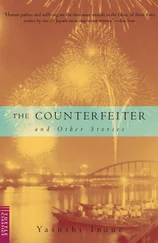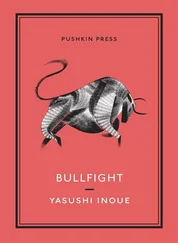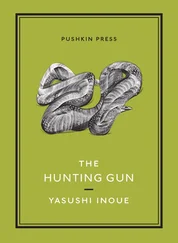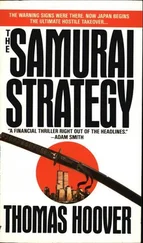In the fourth year of Koji, the name of the era had changed to the first year of Eiroku. 81In April of that year, Uesugi Kenshin entered the province of Shinano with 8,000 warriors and set fire to the plains of Un-no-Daira, which were under control of the Takeda. Shingen was stationed at Komuro Castle at that time, but he ignored Kenshin’s threat and concentrated his attention on the reinforcement of his fortresses. There was an ominous silence between the two armies. To all, it was clear that a great collision between Kai and Echigo was imminent.
In August, Shingen unexpectedly received a confidential letter from the Shogun 82Yoshiteru 83suggesting that negotiations for peace between the armies of Kai and Echigo should be undertaken.
The contents of the letter was the following:
What is the use of sending your armies out every year to fight Uesugi Kenshin and destroying the peace in your boundaries;this does not produce anything for your people but suffering.
Shingen showed this letter to Kansuke.
Kansuke asked immediately, “Did you respond to this letter?”
“Yes, I did.”
“What was your answer?”
“Here.” Shingen showed Kansuke a long letter in a printed style of writing on official letter paper. It was, however, not an answer to the Shogun Yoshiteru, but a prayer for the security of the province of Shinano dedicated to the Togakushi Shrine.
There was nothing more comical and meaningless for Shingen than the advisory letter from the Shogun. 84
Judging from the last part of the advisory letter, which said,
“I shall advise Uesugi Kenshin in the same fashion,” it was presumed that the Shogun had sent a similar letter to Kenshin. But there was no response from Kenshin to Shingen. Most likely Kenshin must have also felt that it was comical and meaningless.
In February of the next year, which was the second year of Eiroku, a priest named Zuirin visited Kai as a messenger from Shogun Yoshiteru. At the same time, it was said that Oodate Harumitsu was sent to Kenshin in Echigo from the Shogun.
Shingen did not say anything specific to him, although he dealt with him tactfully.
In early April, two months after the arrival of the priest, Shingen suddenly summoned Kansuke. It was midnight as Kansuke visited Shingen in his mansion; Shingen was grinning and said, “I have received information that Uesugi Kenshin just left to go to Kyoto to be received by the Shogun.” Then, his body shook for a moment, giving the impression that he wanted to attack Echigo immediately.
“Indeed, there is no better opportunity than now. We have to make use of this efficiently. However, it is not yet the time for a decisive war,” said Kansuke.
Kansuke believed that the war with Kenshin had to take place on the fields of northern Shinano. Providing that they charge, into Echigo now while Kenshin was in Kyoto, the Takeda might be able to cause such extensive damage to the army of Echigo that they would never be able to recover again. But, it would make it very difficult to kill Kenshin himself.
Kansuke mentioned his thoughts to Shingen.
“Then, how will we use this golden opportunity?” asked Shingen
“I would like you to order Kosaka Masanobu to eliminate all of our enemies in the vicinity of Kawanakajima. Then, please allow me to build a castle right there. Once the castle is built, we will be ready to fight Kenshin at any time.”
“Do you really need a castle?”
“Definitely, we do. I would like to have a castle in that strategic area along either the Sai River or the Chikuma River.”
“All right, if you think so, go ahead,” said Shingen quietly. He did not ask why Kansuke needed a castle there.
If it was to be a decisive war of life and death, a castle was not really required in the strategy. It was not the type of war from which they could attack from a castle, or from which they could retreat into the castle. But Kansuke wanted a castle. As long as it was strong, it did not have to be big. It only had to be big enough to accommodate 200 to 300 warriors.
The Takeda would most likely win. Uesugi Kenshin’s army would begin to falter after being broken down. At that time, fresh troops from the castle would attack them from the side. The last decisive blow against Echigo had to come from this small number of warriors. And the commander of this most vital troop had to be the young Katsuyori in his first campaign.
Kansuke wanted a castle for Katsuyori; he wanted a castle in a strategically important location for Katsuyori’s first campaign.
Whether Shingen knew about Kansuke’s plot or not, he readily accepted Kansuke’s idea.
And that night, without wasting a second, the order to go ahead was sent to Kosaka who was stationed in northern Shinano.
Post-horses were quickly sent one after another from Kofuchu.
Kosaka, who was at Amakazari Castle, followed his orders immediately and headed in the direction of the border between Shinano and Echigo. He quickly defeated and overtook several fortresses one after another. By May, he had captured Takanashi Castle, which was the foremost base of the Echigo army.
As soon as Kansuke was informed, he left Kofuchu and headed for northern Shinano. It was to forecast the probable position of the battle that he hoped would soon occur between the Kai and the Echigo armies. He hoped to build Katsuyori’s castle right on this spot. Kansuke slowed his horse to a trot as he rode on the plateau along the borderline of Kai and Shinano where he had previously made numerous trips. In those days, he had ridden alone and galloped at an amazing speed, but now Kansuke was sixty-eight years old. Protected by over twenty samurai, he looked around at the spring scenery of the surrounding fields and mountains, resting his horse occasionally, as he relaxed in the saddle.
Once in a while he stuck his little finger into his ear. He constantly heard a drumming sound, and for Kansuke it sounded like battle cries from a distance.
The day after his arrival in Ueda found him following the Chikuma River. Kansuke met Kosaka at the junction of the Chikuma and the Sai Rivers. Kosaka was on the way from a triumphant battle. Kosaka stationed his troops on the beach of the Chikuma River and visited Kansuke along with a couple of his samurai, where he and his samurai were resting at one corner of the delta. Kansuke stood up and welcomed the young general who was about the age of Shingen. Kosaka was of small stature with a small face. An insignificant-looking samurai accompanied him.
“I am thankful for the trouble you have kindly taken in spite of your great age,” mumbled Kosaka in a low voice.
“The trouble was yours; you have done excellent work. You must be quite fatigued,” answered Kansuke with equal politeness.
Now, all of northern Shinano belonged to the Takeda through the great efforts of Kosaka.
There the two of them sat, side by side on stools. The Sai River was flowing by four or five meters in front of them; the river beach was covered with reeds. Opposite from where they were sitting, the Chikuma River flowed. The spring sun was shining on the white stones covering the beach and also over the black ripple of the Sai River. It was peaceful.
In front of the two reticent, yet notable samurai, sake was served. It looked as if they were father and son.
Kansuke actually did not know him very well except that he was surprisingly good in battle. This young general hardly spoke out at any of the evaluations or planning meetings. To anybody, it appeared that he did not have his own opinion and was happy to let everyone make his decisions for him; he accepted any orders he received and accomplished them to perfection.
This type of personality was both advantageous and disadvantageous to him. People trusted this young samurai, but they never considered him a great general. Even Shingen felt the same way. Whenever there was a problem with a slight difficulty or nuisance, he simply said, “Let’s send Kosaka.” This statement encompassed 80 percent trust and 20 percent insult. People thought that Kosaka was happy and satisfied as long as they gave him an opportunity to fight. At present, he was stationed at Amakazari Castle as the commander-in-chief of the front line against Echigo. Of course, nobody else but Kosaka was suited to this important task, but at the same time, the fact that he was sent to such a dangerous and remote area was proof that he was not considered a crucial leader among Shingen’s staff who attended his war councils.
Читать дальше












